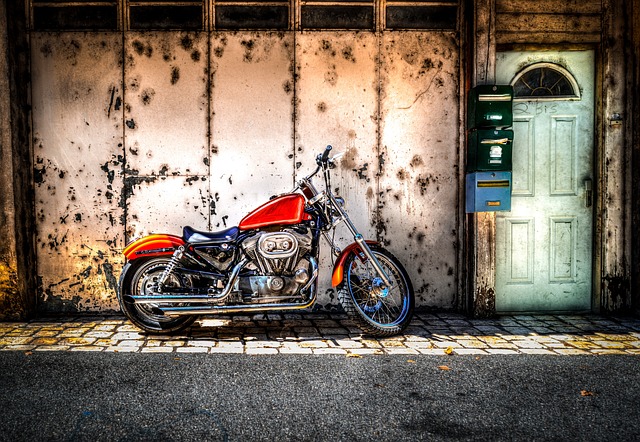To keep a motorcycle battery in top shape during extended storage, it's crucial to consider the type of battery—lead-acid or lithium-ion—as each has different maintenance needs. For lead-acid batteries, regular equalizing charges are necessary to prevent electrolyte stratification and sulfation. Lithium-ion batteries require a specific charging regimen and should not be left fully charged for long periods. Proper care can extend the life of both types: lead-acid typically last one to three years, while lithium-ion can endure up to five years or more with diligent attention. Clean the battery terminals, fully charge the battery before storage, and use a battery tender to maintain a partial state of charge. Ensure the electrolyte level is correct to prevent overcharging, and store the battery in a cool (between 60°F and 75°F or 15°C to 24°C), dry environment, away from direct sunlight and extreme temperatures to avoid accelerated aging. Regular inspections are necessary to maintain cleanliness, proper charge levels, and detect issues like leakage or corrosion promptly. Utilize trickle charging at a low amperage between 0.3 to 1 amp to prevent overcharging and sulfation, and monitor the battery's voltage with a multimeter. Store your motorcycle indoors to protect the battery from environmental factors that could compromise its longevity and performance. In summary, maintaining a motorcycle battery during long-term storage involves understanding its type, providing optimal charging conditions, and performing regular inspections to ensure it remains ready for use whenever needed.
navigate the nuances of maintaining your motorcycle’s power source between rides? With the right knowledge, you can extend your bike’s battery life and ensure it revives to life whenever you’re ready to hit the road. This comprehensive guide delves into the 10 best tips for storing your motorcycle battery, from understanding its type and lifespan to meticulous charging and safety precautions. Learn how to prepare your battery for hibernation, optimize storage conditions, and maintain readiness. Keep your ride ready to roll with our expert advice on motorcycle battery care.
- Understanding Your Motorcycle Battery Types and Lifespan
- Cleaning and Preparing Your Motorcycle Battery for Long-Term Storage
- Optimal Storage Conditions: Temperature and Humidity Considerations
- Trickle Charging and Maintenance: Keeping Your Battery Ready to Go
- Safety Precautions and Best Practices When Storing a Motorcycle Battery
Understanding Your Motorcycle Battery Types and Lifespan

When preparing your motorcycle for extended storage, understanding the type of battery it utilizes and its inherent lifespan is crucial for ensuring its longevity. Motorcycles often come equipped with one of two types of batteries: lead-acid or lithium-ion. Lead-acid batteries are the most common and have been the industry standard for years due to their reliability and cost-effectiveness. They typically consist of six cells, each containing a lead plate submerged in sulfuric acid. To maintain charge during storage, regular equalizing charges are necessary to prevent stratification of the electrolyte solution, which can lead to sulfation, a condition where the lead sulfate crystals become too large and reduce the battery’s ability to hold a charge.
In contrast, lithium-ion batteries offer greater power density and are more resistant to the damaging effects of sulfation. They also have a longer lifespan when properly maintained; however, they require a proper charging schedule and should not be left fully charged for long periods as this can degrade their performance over time. Regardless of the type, all motorcycle batteries will inevitably face the end of their service life. The average lifespan can vary greatly depending on factors such as usage patterns, storage conditions, and battery maintenance practices. For lead-acid batteries, a typical lifespan ranges from one to three years, while lithium-ion batteries may last up to five years or more if well cared for. To maximize your motorcycle battery’s life, whether lead-acid or lithium-ion, it’s essential to understand its type and monitor its condition regularly during storage. Proper charging, discharging, and equalizing practices will help extend its life and ensure that your motorcycle is ready to ride when you are.
Cleaning and Preparing Your Motorcycle Battery for Long-Term Storage

To maintain your motorcycle battery’s longevity and optimal performance during long-term storage, it’s crucial to perform a few key steps. Begin by cleaning the battery terminals and casing with a wire brush or a mild solution of baking soda and water to remove any corrosion or dirt that could hinder conductivity. Ensure the battery is fully charged before storing; a fully charged battery holds its charge better over time compared to a partially discharged one. If possible, maintain a partial state of charge using a battery tender or a similar charger designed for motorcycle batteries, as this prevents the battery from fully discharging and being recharged repeatedly, which can damage the cells.
In preparation for storage, check the battery’s electrolyte level; it should be at the correct level to prevent overcharging when connected to a battery maintainer. After refilling with distilled water if necessary, resecure the vent caps tightly to avoid spills and gas loss. Store the battery in a cool, dry place away from direct sunlight and extreme temperatures, as these conditions can significantly shorten its lifespan. Regularly inspect the battery during storage to ensure it remains clean, charged, and free from any signs of leakage or excessive corrosion. Proper cleaning and preparation of your motorcycle battery for long-term storage will go a long way in preserving its condition and readiness for use when you’re ready to ride again.
Optimal Storage Conditions: Temperature and Humidity Considerations

When storing a motorcycle battery for extended periods, maintaining optimal conditions is paramount to prevent deterioration and ensure longevity. Ideally, the battery should be stored in a cool, dry environment. Temperature plays a critical role; extreme temperatures can accelerate self-discharge. For instance, exposing a battery to high temperatures can cause overcharging and reduce its lifespan, while freezing temperatures can lead to a loss of electrolyte density and capacity. Therefore, storing the motorcycle battery in an area that remains between 60°F and 75°F (15°C to 24°C) is optimal.
Humidity levels must also be carefully controlled during storage. A humid environment can lead to corrosion on terminals and connectors, which impairs conductivity and can cause the battery to fail. To mitigate this, ensure the storage area has a relative humidity of around 40% to 70%. If the ambient humidity exceeds this range, consider using a dehumidifier or employing a desiccant like silica gel packets to absorb excess moisture. Regularly inspect the battery during storage, and if condensation is observed on the battery casing, take appropriate measures to dry it thoroughly and maintain the correct humidity level to prevent any damage.
Trickle Charging and Maintenance: Keeping Your Battery Ready to Go

When storing your motorcycle for an extended period, maintaining your battery’s charge is paramount to ensuring it remains ready to go when you are. Trickle charging, a method of slowly providing electricity to your motorcycle battery, is one of the best practices for long-term battery health. Unlike a fast charger that fully recharges the battery in a short time, a trickle charger delivers a small, constant current to the battery, keeping it at an optimal charge level without overcharging or damaging the cells. This method prevents sulfation, a condition where sulfuric acid in the battery’s electrolyte stops settling on the lead plates, which can impair the battery’s ability to hold a charge over time.
To maintain your motorcycle battery while in storage, it’s crucial to choose the right trickle charger for your specific battery type and size. Consult your motorcycle’s manual or the charger manufacturer’s guidelines to select the correct model. Connect the charger to the battery and set it to a low amperage, typically around 0.3 to 1 amp. This will keep the battery at a full state of charge without causing any harm. Regularly check the battery’s voltage with a multimeter; a fully charged lead-acid battery should read approximately 12.6 volts. If you notice the voltage dropping below this range, it may be time to recharge. Additionally, storing your motorcycle in a cool, dry place, away from extreme temperatures and direct sunlight, will further protect your battery and ensure it remains ready for your next ride. Regular maintenance and an appropriate trickle charging system are key to preserving the longevity and performance of your motorcycle battery.
Safety Precautions and Best Practices When Storing a Motorcycle Battery

When securing your motorcycle for an extended hiatus, following the best practices for motorcycle battery storage is paramount. This article has outlined ten top-tier tips that encompass understanding your battery type and lifespan, preparing your battery for storage, ensuring optimal conditions, implementing trickle charging for maintenance, and adhering to safety precautions. By carefully considering each step and heeding the advice provided on motorcycle battery care, you can maintain your bike’s readiness without compromising its longevity. Remember to keep these tips handy, so your motorcycle’s power source remains robust and ready for adventure whenever you are.
